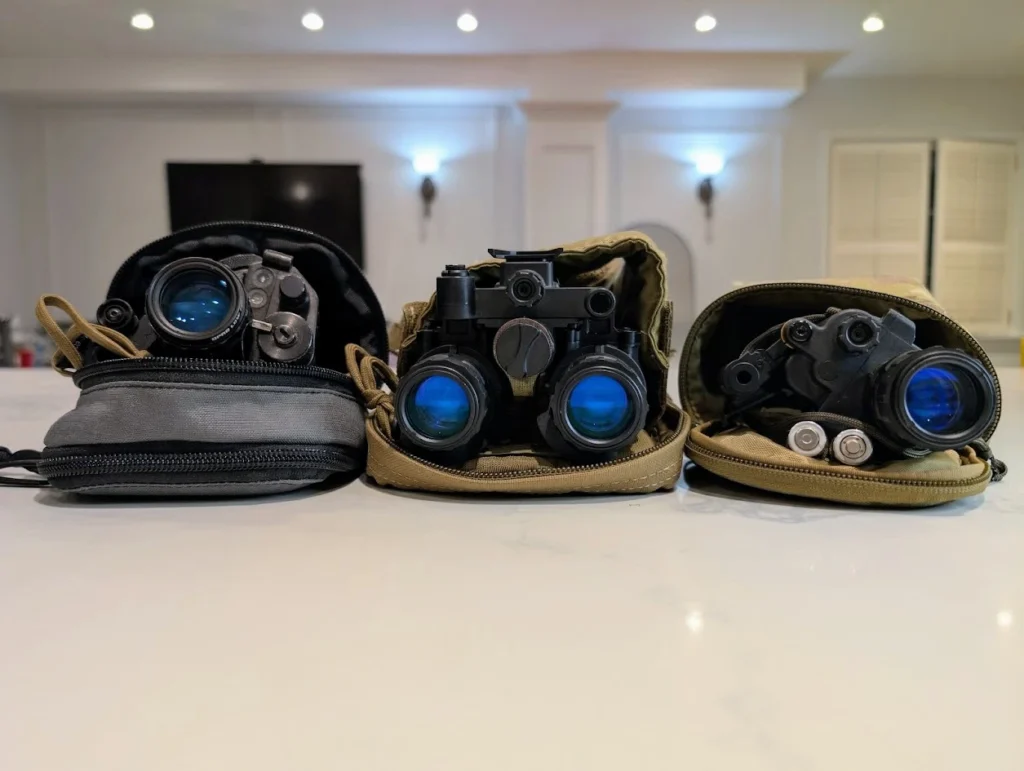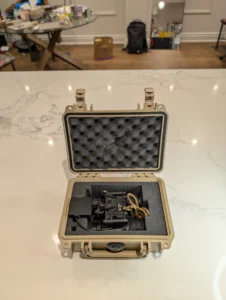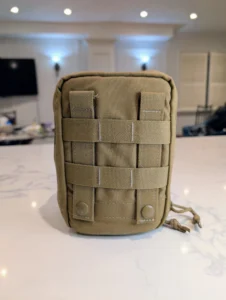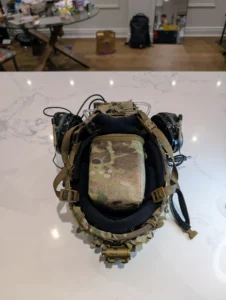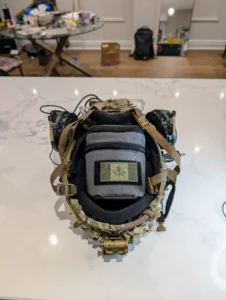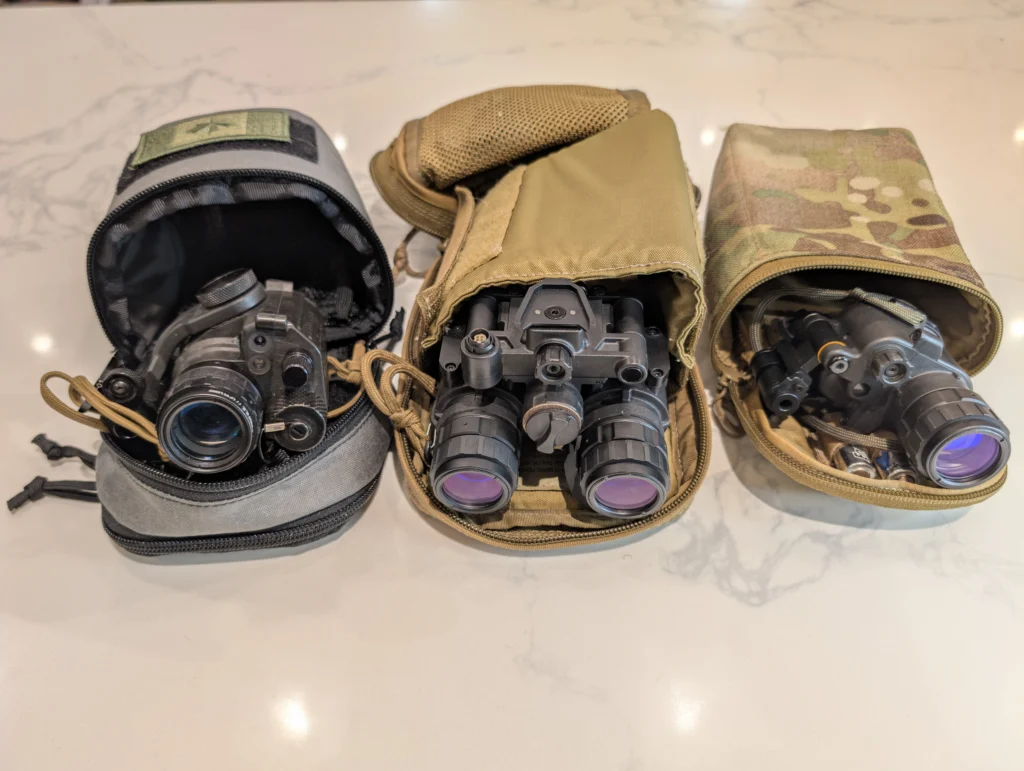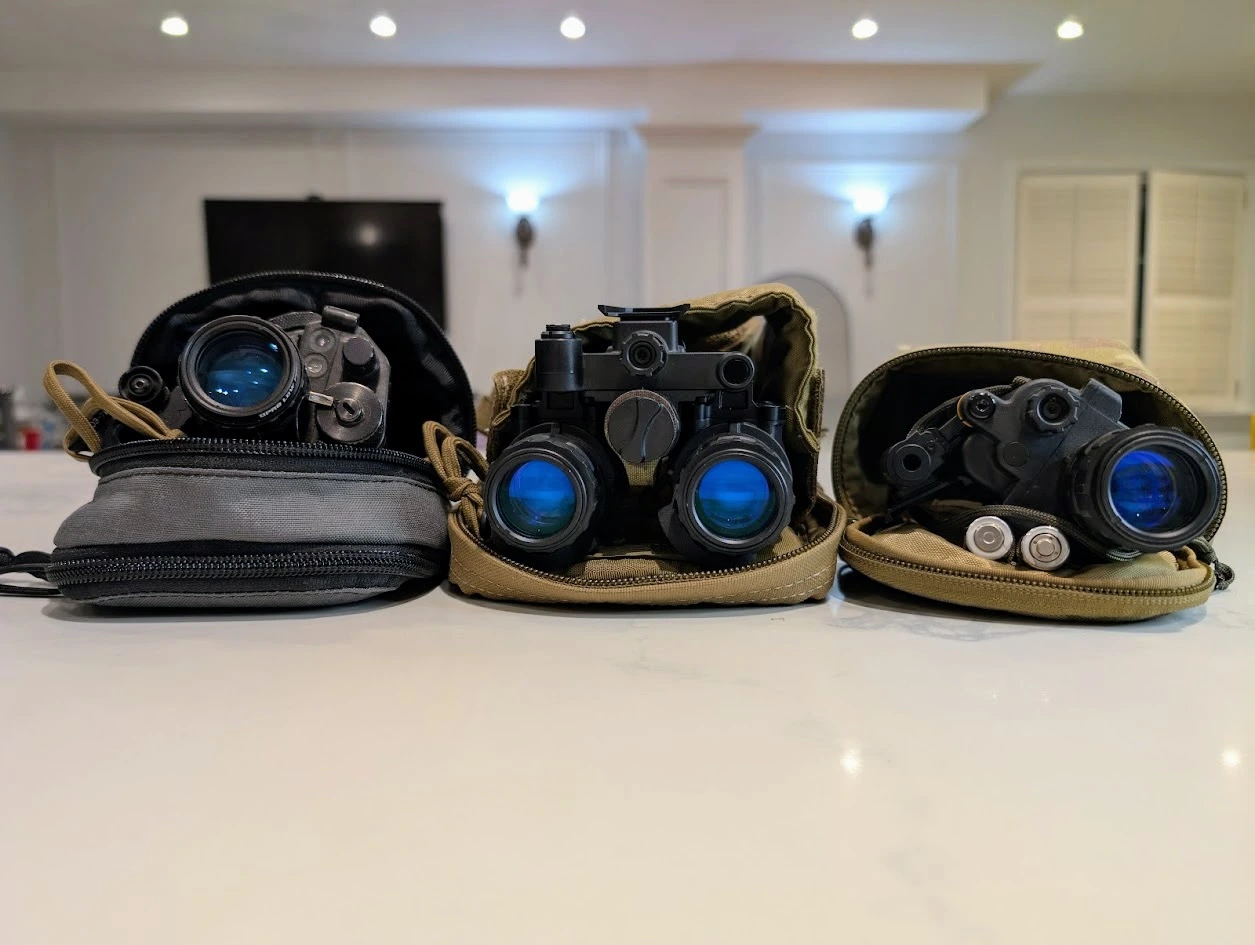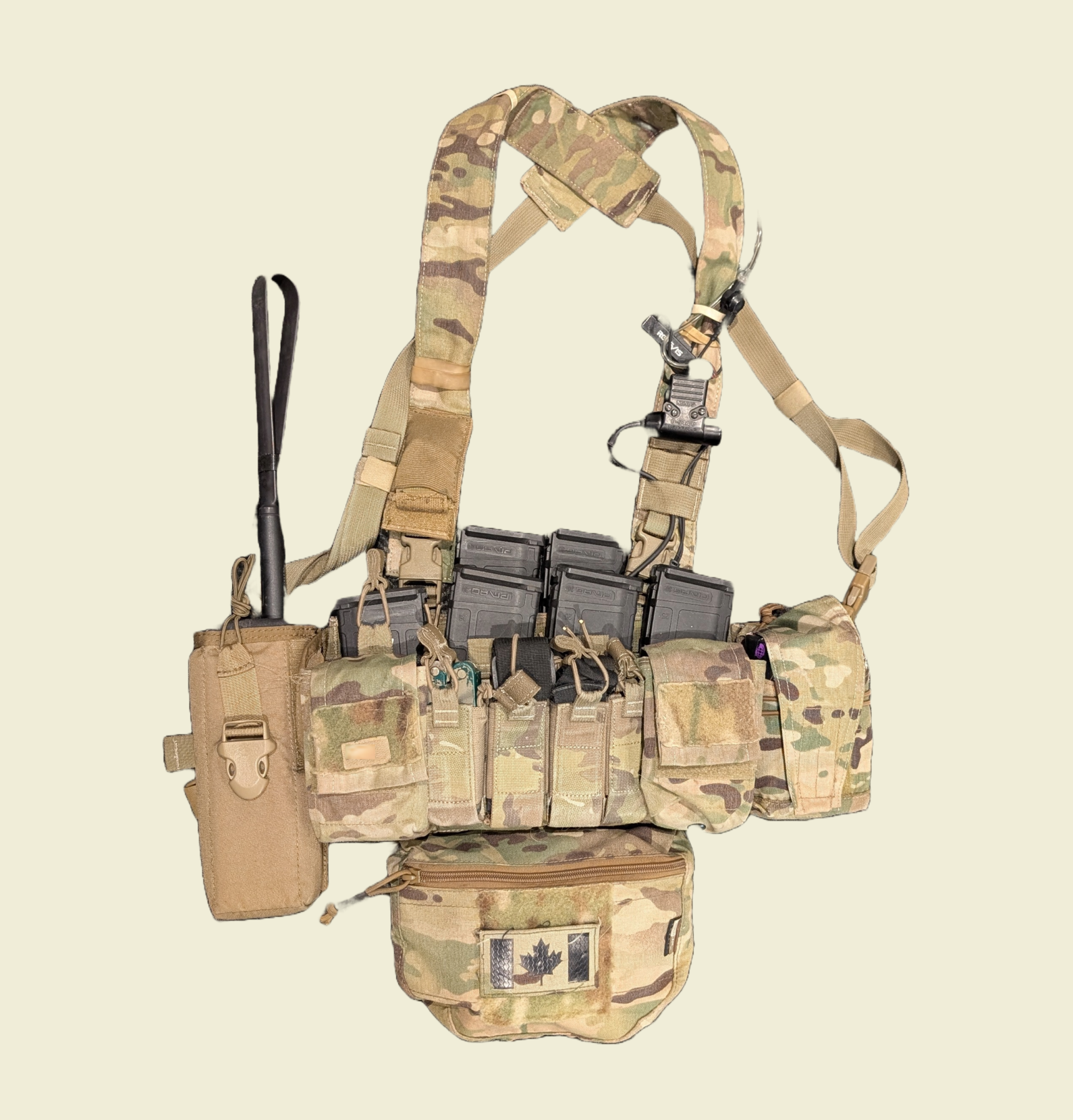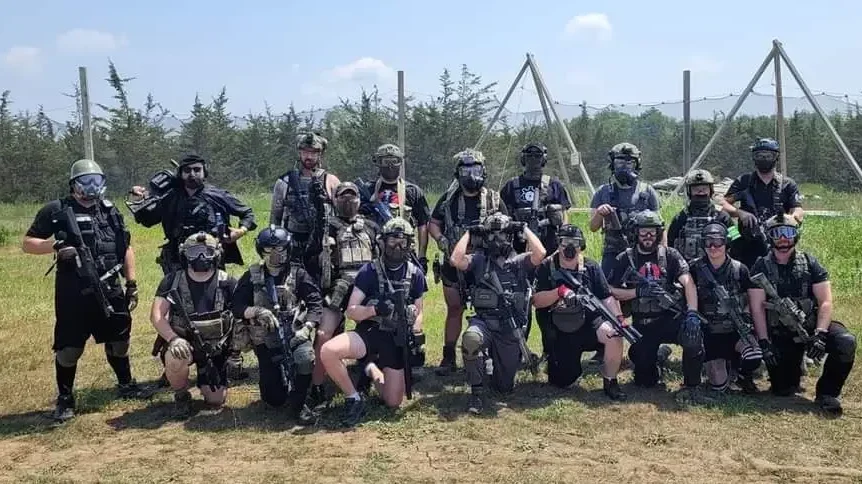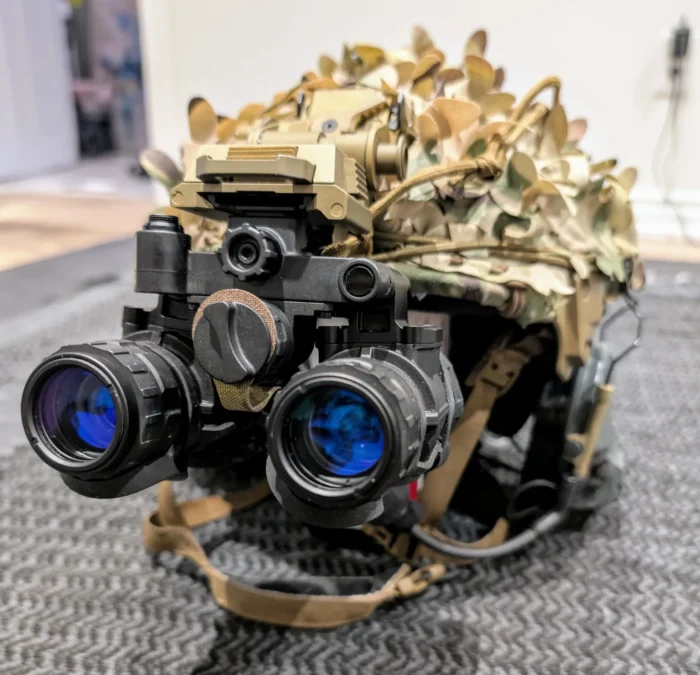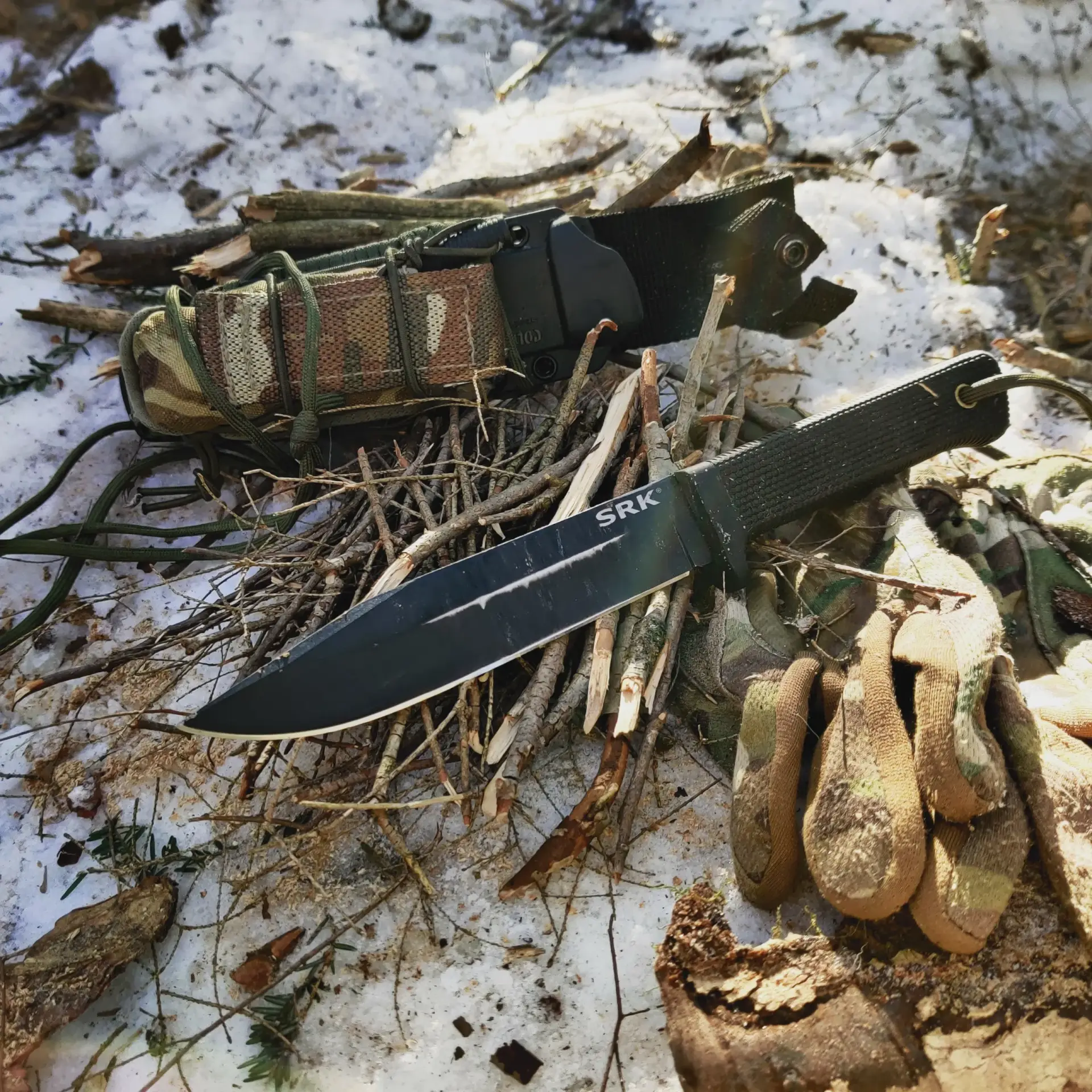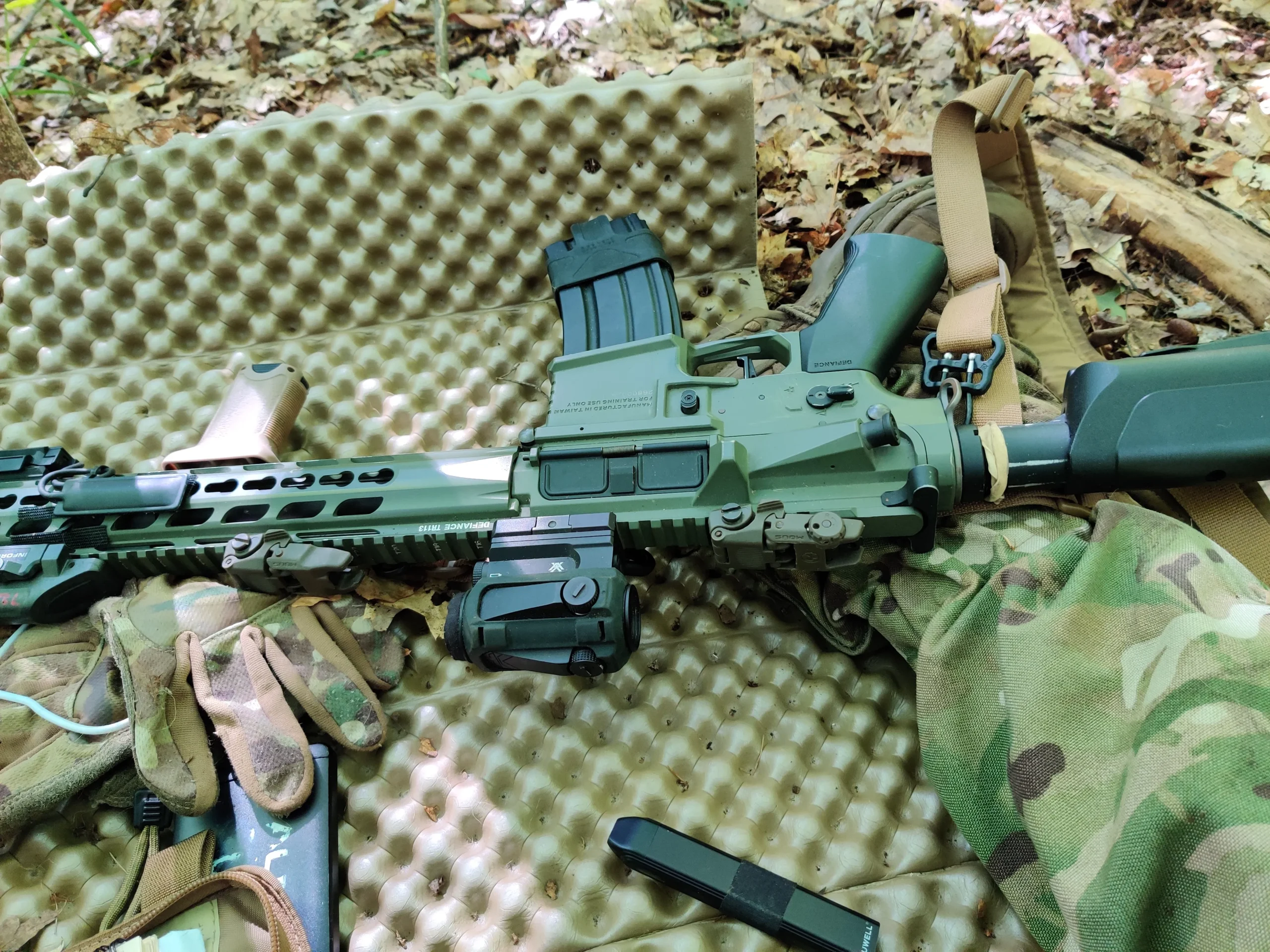Today we are exploring and comparing night vision storage options that we have used over the last eight years. Since our first device, we have used four different options for storage and we have learned a lot about what works for us and in what situations we would use one over the other.
We will not be providing our in-depth reviews on each of these pouches as a comparison will be best suited to convey our experiences and the differences between the options we have tried.
(From left to right: ONSC POD Pouch, Woven Apogee Node Pouch, Tactical Tailor Night Vision Pouch – Photo Credit: The Kit Kobold 2025)
What we look for in night vision storage options
Night vision devices are expensive and owners want to be able to protect their investment both at home and when transporting. This necessitates considering what criteria makes a storage option suitable for the task. It is often repeated in the night vision community that night vision devices are designed to be used by clumsy 18 year old grunts and should be able to take plenty of abuse and devices should not be baby’ed. While we agree, keeping your own device that you paid for, in good condition makes sense. We think the most relevant criteria for storage options are:
- Security/Padding;
- Design features;
- Lack of abrasive interiors;
- Volume; and
- Profile.
Our night vision storage options:
Pelican 1120
(Pelican 1120 with binocular device- Photo Credit: The Kit Kobold 2025)
The first storage option we purchased years ago was a pelican case. There are various sizes, but we have found the smallest one that fits both monoculars and most binocular devices is the Pelican 1120. One size larger may be considered for larger devices. This was our go to for our first few overnight outings with night vision. We soon learned it looked ridiculous pulling it out of a pack as it is bulky and not form fitting. It takes up space and does not fit into any convenient area of a pack that we use. Nevertheless when we first got night vision it gave us comfort that the device would be protected from the elements and impact on our adventures. We have since retired the case from outdoor usage and mainly use it to store our devices at home. It has extra space for batteries and other accessories like a clip on camera. It might not be large enough to have a binocular and a COTI though.
It should be noted that some industry experts have indicated that storing a device in something like a pelican case long term is not ideal as it traps moisture and is not breathable. We trust their experience and insight, but we have stored devices in pelican cases for years, even after use in humid and wet environments. We take steps to make sure our devices are dry before storage and have not run into any issues.
Tactical Tailor PVS-14 Pouch
(From left to right: Tactical Tailor Night Vision Pouch, Front, MOLLE and Internal – Photo Credit: The Kit Kobold 2025)
The second storage option we got was a surplus PVS-14 pouch from Tactical Tailor. Tactical Tailor’s website appears not to sell it anymore but there are plenty of them available on the surplus market. The reasoning behind our purchase was that we wanted a soft pouch that could fit into more places in our pack and could be attached to various load bearing equipment. It fits into something like a Mystery Ranch Daypack Lid which makes keeping the device with us when we are away from our pack not an issue. The pouch does a reasonable job of protecting and transporting devices and accessories. We really liked that we could attach it to packs, belts and chest rigs. Although we personally do not attach it to belts or other tactical nylon as our adventures often has us falling over and we are concerned we would fall onto the pouch. Even if that did happen, the pouch probably would mitigate impact damage as the pouch is designed for front line warfighters but is not as high speed and low drag as other options.
The amount padding and security offered by the pouch is nothing remarkable but in line with probably what a grunt would require. The pouch features some netting inside for organization and storage of things like sacrificial lenses, batteries, cleaning clothes and other accessories. We are concerned that the netting can be abrasive and may scratch glass. To mitigate this we used a sock (my wife’s sock) to encase our device before putting it in the pouch.
It also features a drainage hole and double zippers. If you have read our previous posts, you will know that double zippers are really important to us as it helps with redundancy if one of them fails.
The brick shaped nature of the pouch makes it a decent choice for tetrising gear inside a pack.
We have mainly used the pouch with a PVS-14. The most novel feature of this pouch is that the padding can be adjusted via velcro to be more form fitting around the device. This makes sure the device is cradled and does not rattle or bang against other items. While the pouch felt a little large in terms of volume for a PVS-14 we are pleased to report that the pouch is able to fit most articulating binoculars due to the adjustability of the padding.
The size and footprint of the pouch is too large to fit into our helmet. This may be relevant for users who wish to cushion their night vision pouch by using the helmet like a baby seat.
The pouch unfortunately does not provide an material padding at the top or bottom of the pouch. This would correspond with the eyepiece side and the objective side of devices.
Pros: Soft, in use by war fighters, feature rich, adjustable padding, and organizational items. It can be a one pouch option to fit either a monocular or binocular/ Has MOLLE on it so you can attach more things if you wish.
Cons: Larger than it needs to be if only being used for monocular, netting inside is not soft and can be abrasive. Not a lot of colour options. I think it only comes in Coyote Brown which suggests it may be US marine issue. It may be out of current production. No padding at the top or bottom of the pouch.
Woven Apogee Node Pouch
(From left to right: Woven Apogee Node Pouch front, MOLLE, fit into helmet, internals – Photo Credit: The Kit Kobold 2025)
The ONSC POD (MINI)
(From left to right: ONSC POD Pouch, Woven Apogee Node Pouch, Tactical Tailor Night Vision Pouch – Photo Credit: The Kit Kobold 2025)
Final Thoughts
(Pouches – Family Picture – Photo Credit: The Kit Kobold 2025)
We haven’t made any of our pouches redundant dammit! We have not found our one pouch do it all. Hopefully our comments will help others explore the options available.
The pelican case is great for home for storage, it does that job fairly well and offers the most protection. I don’t think I would even consider it for travel as it is too bulky.
We like the Tactical Tailor pouch. It both a monocular or an articulating binocular. It has adjustable padding to help lock in the device. It is larger than we would like for storing inside a pack. It has less protection than we would like for exterior use on a LBE.
The NODE pouch is the lowest profile and but has the least amount of padding. It works well when cushioned amongst other things like inside a helmet or inside a pack.
The ONSC POD Mini fits both monoculars and articulating binos and has the most padding and structure and is what we would use if we had to wear a pouch on LBE.
Links:
1120 Pelican – as an Amazon Affiliate, we earn for qualifying purchases.
